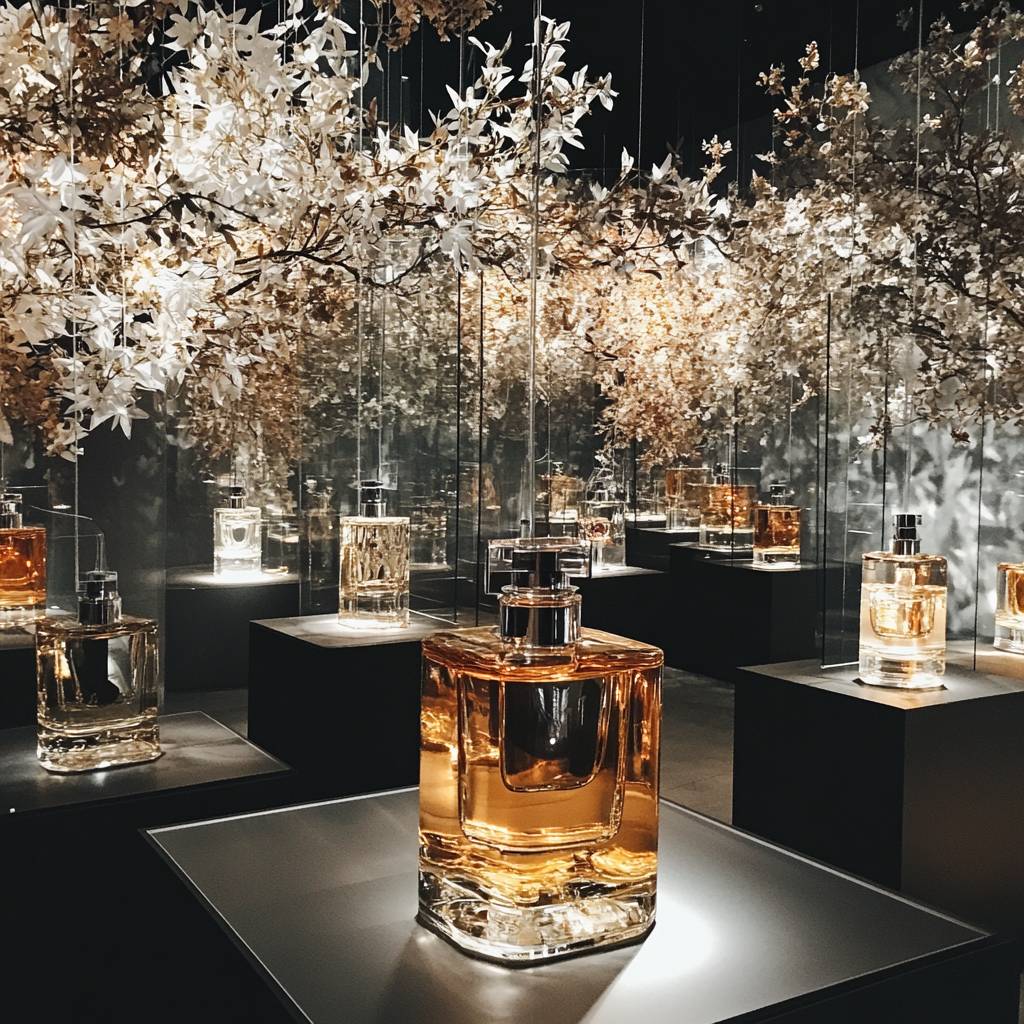Perfume art installations are a unique form of contemporary art that combines visual elements and scents to create a multi-sensory experience. These installations not only affect the sense of sight, but also awaken the sense of smell, enhancing the emotional and intellectual perception of the works.
History and evolution of perfumery and art installations
The history of perfume art installations dates back to ancient times, when fragrances were used in religious and cultural ceremonies to create a certain atmosphere. However, they began to develop as an independent art form in the 20th century, when artists began to actively explore the possibilities of multimodal perception. Avant-garde movements and the emergence of new technologies have opened up opportunities for artists to integrate scents into their works.
In recent decades, perfume and art installations have become an integral part of modern exhibitions and galleries. This is due to the growing interest in multimedia and interactive art forms that allow viewers to become active participants in the perception process. In such installations, scents play a key role, helping to create atmosphere, evoke associations and enhance emotional impact.
The role of curators: How concepts are created and fragrances are selected
Curators play a central role in the creation of perfume and art installations, being responsible for the concept and implementation of exhibitions. Their tasks include:
- Concept development: Curators determine the main idea of the installation, often collaborating with artists and perfumers. They research the theme they want to explore and select appropriate visual and aromatic elements.
- Selection of fragrances: Fragrances are selected in accordance with the concept of the exhibition. This may include creating unique compositions that enhance or contrast visual imagery.
- Organization of space: Curators decide how scents will be distributed throughout the exhibition space to ensure an even impact on all visitors. This may include the use of special scent diffusers or natural ventilation.
The curators are also working on the logistics and promotion of the exhibition, drawing attention to the uniqueness of the perfume and art installations. They often collaborate with perfumers to create unique scents that become an integral part of the exhibition.
Technological aspects: Integration of scents and visual elements
Integrating scents into art installations requires the use of modern technology. One of the key tasks is creating sustainable and controlled aromatic compositions that can remain stable throughout the duration of the exhibition. This requires the use of high quality ingredients and fragrance production technologies.
Technology also plays an important role in the distribution of fragrances. Special devices, such as diffusers and aroma units, allow you to precisely control the intensity and distribution of aromas in a space. This ensures an even impact on viewers and allows for the intended effects to be created. Modern aroma control systems can be integrated with audiovisual elements, allowing the creation of complex multimedia installations.
Psychological Impact on Viewers: Emotions and Perception
Perfume and art installations have a strong emotional impact on viewers thanks to a unique combination of visual and olfactory stimuli. Fragrances can evoke deep associative connections and memories, enhancing the perception of visual elements and creating a holistic impression of the product. For example, scents of flowers may be associated with spring and the awakening of nature, while woody and resinous notes can evoke a feeling of comfort and security.
These installations can also evoke a wide range of emotions, from joy and peace to anxiety and melancholy. Depending on the concept of the exhibition and the scents used, viewers may experience different emotional reactions that complement and deepen their understanding and appreciation of the art. This makes perfume art installations a powerful tool for conveying complex ideas and feelings.
The future of perfume and art installations: Trends and prospects
The future of perfume and art installations promises many new opportunities and directions for development. One of the key trends is integration interactive and personalized technologies, which allow viewers to participate in the creation and transformation of aromatic space. Such technologies could include sensors that respond to motion or temperature, and systems that tailor scents to viewers’ individual preferences.
Another important trend is the use of environmentally friendly and sustainable materials. With growing awareness of environmental issues, artists and curators are looking for ways to minimize the environmental impact of their installations by using natural and biodegradable components. This not only meets modern ethical standards, but also opens up new creative possibilities.
Perfume art installations are a unique form of contemporary art that combines visual and olfactory elements. These installations create a multi-sensory experience, enhancing the emotional and intellectual perception of viewers. The role of curators, the use of modern technology and the consideration of psychological aspects make these installations an important tool for exploring and communicating complex ideas and emotions.
Curators must have knowledge of fragrance, visual art and the psychology of perception, as well as experience in organizing and conducting exhibitions.
These installations create a multi-sensory experience that enhances the emotional impact and allows for deeper immersion into the content of the artwork, making it more memorable and meaningful.

